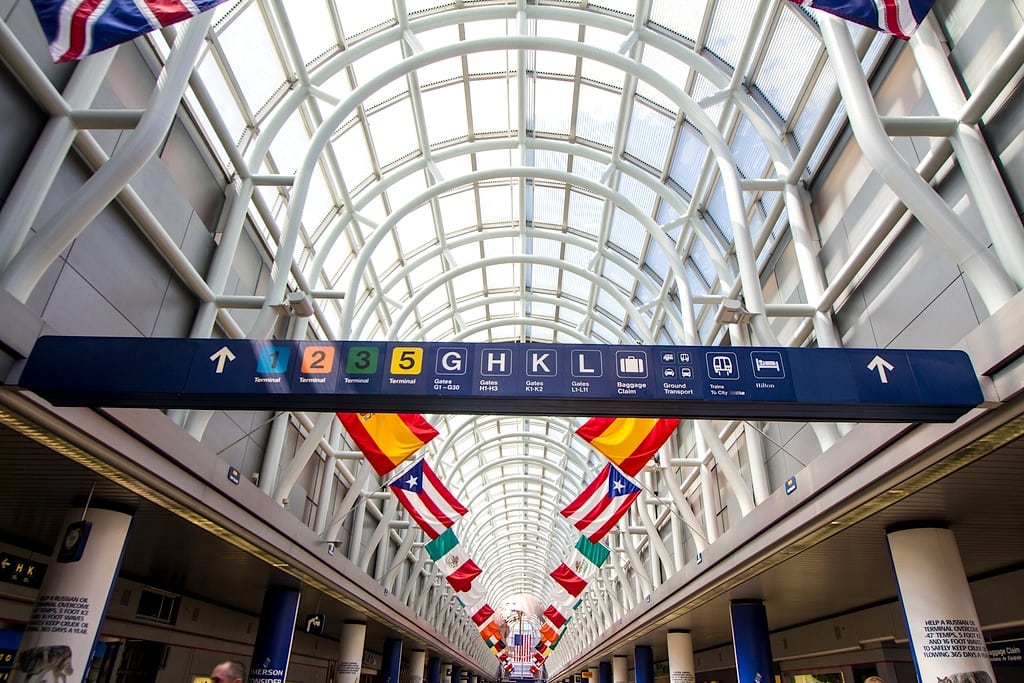Skift Take
The air travel statistics largely mirror and reinforce the tourism numbers reported by the United States each year: Its neighbors capture the greatest absolute traffic, but emerging destination represent the greatest growth.
Travelers flying in and out of the United States reached a record 185.4 million passengers in 2013, a 4 percent increase over 2012, reports the U.S. Department of Commerce’s National Travel & Tourism Office.
An increase in American and international travelers drove the record-breaking growth. Canada and Mexico kept the greatest share of air traffic in and out of a single country, but several regions including the Middle East and South America grabbed a significantly larger piece of the market share over the past year.
Who Flew?
The majority of the flyers passing through the United States were foreign travelers. Fifty-six percent, or 104.4 million international passengers flew in or out of the U.S. last year.
This is a 5 percent increase over 2012, which is comparable to the 4 percent increase in U.S. travelers flying last year. Eighty one million U.S. flyers took to the air, comprising 44 percent of all air traffic.
| International Air Traffic | Passengers (millions) | % of Change from 2012 | Market Share |
|---|---|---|---|
| U.S. Citizens | 81 | 3.6% | 43.7% |
| Non-U.S. Citizens | 104.4 | 5.1% | 56.3% |
On Whose Airlines?
U.S. airlines carried more passengers than foreign carriers in 2013. They flew just over half, or 98.4 million passengers, of the total 185 million flyers.
Foreign carriers flew fewer passengers, 86.9 million, but their passenger load increased three percent more than U.S. airlines suggesting they will continue to grab a larger piece of the market share in 2014.
| International Air Traffic | Passengers (millions) | % of Change from 2012 | Market Share |
|---|---|---|---|
| U.S. Flag Carriers | 98.4 | 3.3% | 53.1% |
| Foreign Flag Carriers | 87 | 5.7% | 46.9% |
Canada and Mexico
Twenty-five percent of all air traffic to and from the United States is connecting passengers to Canada and Mexico.
Twenty-six million passengers, 14 percent of all U.S. international air traffic, traveled between the United States and Canada last year. The majority of flyers, 18.8 million, were Canadians or other foreign travelers. The number of American citizens traveling to Canada grew 6.5 percent to 7 million last year.
Foreign airlines carry a little more than half of passengers that travel between the two destinations.
| Canada Region | Passengers (millions) | % of Change from 2012 | Market Share |
|---|---|---|---|
| U.S. Citizens | 7 | 6.5% | 27.1% |
| Non-U.S. Citizens | 18.8 | 3% | 72.9% |
Just over 21 million passengers, 11 percent of all U.S. international air traffic, were traveling between the U.S. and Mexico last year. The number of American citizens traveling to Mexico grew 8 percent to 12.9 million last year.
U.S. airlines carry 75 percent of travelers going between the two countries, but their market share slipped about 1 percent last year. Meanwhile, foreign airlines increased their passenger load 11 percent.
| Mexico Region | Passengers (millions) | % of Change from 2012 | Market Share |
|---|---|---|---|
| U.S. Citizens | 12.9 | 8% | 61% |
| Non-U.S. Citizens | 8.2 | 5.5% | 39% |
Flyers to Overseas Markets
Europe, unsurprisingly, accounts for the greatest share of international air traffic to and from the United States with 29 percent, or 54.5 million, of all passengers.
The real story; however, is in the substantial growth of air travel between the U.S. and the Middle East, South America, and Oceania over the past year.
U.S. and foreign travelers transiting through each of these three region grew more than 8 percent in 2013. Each market still accounts for less than 10 percent of U.S. international air traffic flow, but the growth suggests their share will continue to rise in coming years.
| Overseas Region | Passenger (millions) | % of all international air traffic | % Change from 2012 |
|---|---|---|---|
| Europe | 54.5 | 29% | 2.5% |
| Asia | 28 | 15% | 4.3% |
| Caribbean | 19.3 | 10% | 1.7% |
| South America | 14.6 | 8% | 9.4% |
| Central America | 9.5 | 5% | 4.8% |
| Middle East | 6.8 | 4% | 10.9% |
| Oceania | 4.3 | 2% | 8.1% |
| Africa | 1.4 | 1% | -2% |
Although the air traffic trends largely mirror the international tourism trends that we highlighted last week, Asia’s market share growth seems small in comparison to the regions highlighted above.
This could be because air traffic between the U.S. and Asia is leveling off after several years of growth or because much of the region’s tourism growth is driven by its neighbors, not the U.S.
The Daily Newsletter
Our daily coverage of the global travel industry. Written by editors and analysts from across Skift’s brands.
Have a confidential tip for Skift? Get in touch
Tags: skiftstats, usa
Photo credit: Flags hang in a terminal at Chicago's O'Hare International Airport. Nicola / Flickr
